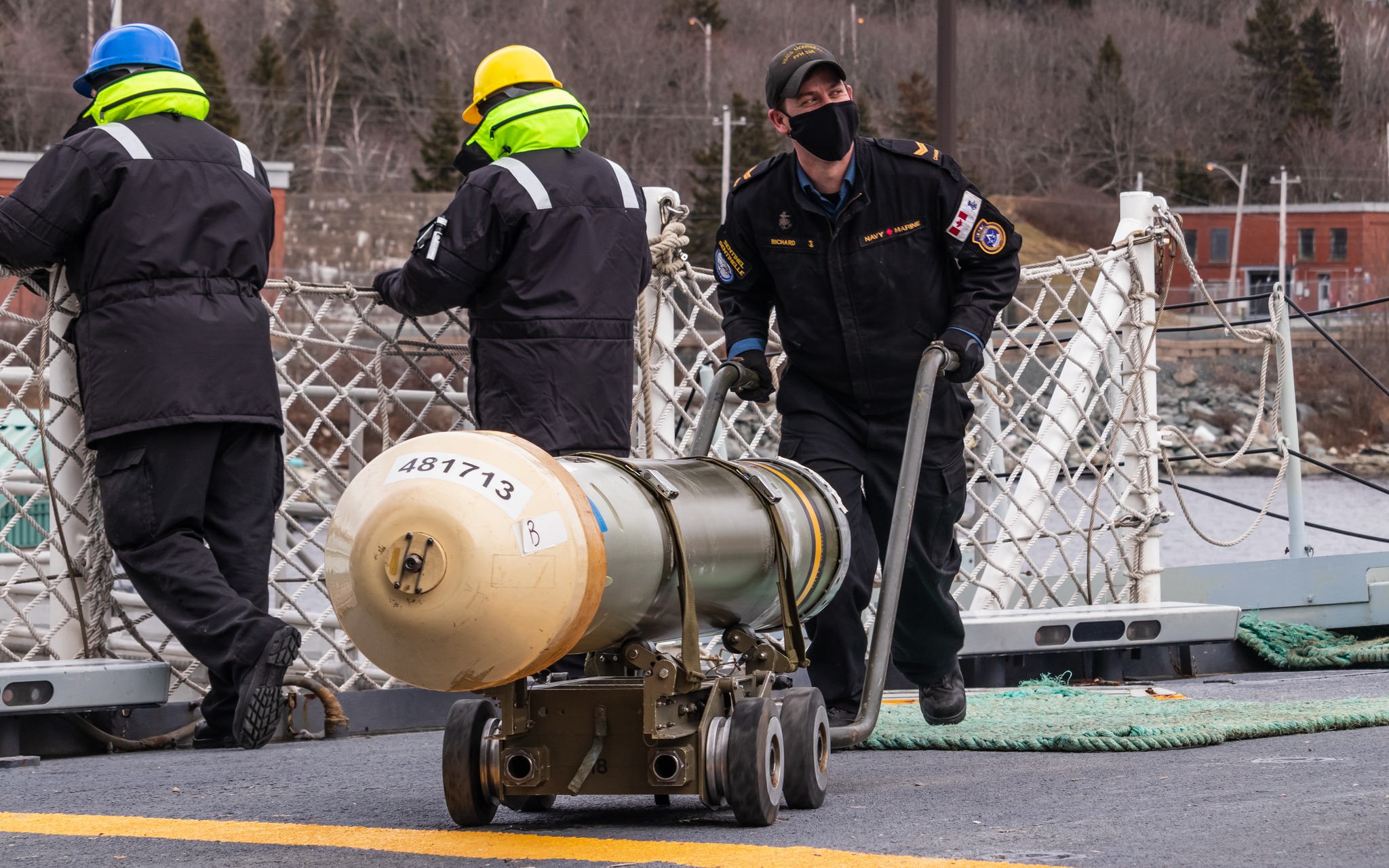
S1 SAIF MORSY
From shore to sea: FMF Cape Scott and Fleet Engineers help ready HMCS Montreal for deployment
Par Joanie Veitch,
Équipe du trident
When Her Majesty’s Canadian Ship (HMCS) Montreal left its home port of Halifax on January 19, the effort to get the ship “over the horizon” was the culmination of a huge amount of planning and preparation, involving not just the ship’s company but a large number of fleet maintenance personnel behind the scenes — production workers and engineers working countless hours to ensure the Halifax-class frigate was ready to sail.
Their common goal? Get the ship fully operational for its high readiness mission, a six-month deployment on Operation Reassurance — a first for Montreal — as part of the Royal Canadian Navy’s ongoing support of Standing NATO Maritime Group 2 (SNMG2) in Northern Europe.
“The lead up to a ship like Montreal going on a high readiness mission, that’s the hardest thing we do as a Navy. It’s a huge process and a ton of work… tens of thousands of hours,” said LCdr Ian Blay, an engineer at Fleet Engineering Readiness at HMC Dockyard in Halifax, NS.
As part of Fleet Engineering, LCdr Blay works with both Fleet Maintenance Facility Cape Scott (FMFCS) personnel and ship’s staff to ensure that all maintenance and repair work required for an upcoming deployment is identified and prioritized.
While the operational schedule for fleet vessels is mapped out on a five-year cycle, the most intense work period for a high readiness mission is the year and a half prior to the ship’s major deployment.
“At its most basic, we look at what’s broken that we have to fix. Corrective maintenance is the first category of maintenance, but we’re also looking at preventative maintenance — what needs to be done so that things won’t break. Doing that helps us get ahead of things to ensure things go as smoothly as possible,” said LCdr Blay.
At the beginning of the maintenance schedule the work mostly focuses on ensuring the ship will be safe both alongside and at sea. After any necessary hull work is completed, inspection and maintenance of damage control systems and fire fighting equipment takes top priority before moving on to the propellers, the gas turbines and the propulsion diesel engine, as well as the navigation radars, among many other items.
The often-quoted adage that a warship needs to be able to float, move and fight leads us to the next phase of the maintenance schedule: combat systems engineering.
This is where Steve Watters and his team in the Combat Systems Engineering division at FMFCS come in. A civilian now, Watters was in the Navy for 17 years before retiring from the military in 2007 and joining FMFCS in 2008 as the Combat Systems Engineering Officer.
Between last-minute requirements, new systems or software installations, frequent schedule and priority changes, as well as dealing with faults across multiple systems with work to be conducted alongside and at sea, it is never a simple task to get a ship “out the door”, said Watters.
“Every deployment has new systems or software installations, which always leads to a few gremlins that you have to work out.”
Some of the more demanding examples of such work in the lead-up to this latest Op Reassurance deployment included the installation of a new version of software for the Combat Management System (CMS), resolving a sensor alignment issue that could have impacted the ship’s fighting ability, and the installation and testing of new LINK 16 radios to replace an older, obsolete model, Watters said.
“Being able to share contact data between ships, including our allies, is a key component to effectively operate in a modern Navy,” Watters said.
Sometimes a problem arises just before a ship is set to sail, such as was the case with a fault that showed up with the loaded Evolved Sea Sparrow Missiles. The issue was resolved but caused a delay in the schedule, Watters said.
“With the help of ISEA (In-Service Engineering Agency), Above Water Systems Engineering was able to identify the issue so it could be resolved, but Montreal lost a few days of their preparation time as they had to return to the Ammunition Depot to replace some missiles.”
As with all deployments since March 2020, COVID-19 added another layer of challenge. While Montreal’s crew of 240 people was preparing for deployment, rising numbers of the Omicron variant put CFB Halifax into a more restrictive protocol, affecting work schedules and the timing of trials as outside workers may have to isolate to ensure the safety of the crew before going onboard.
“When COVID first hit it had a huge effect but over time we’ve been able to adapt. We have moved to more shift work so there aren’t as many people working together at one time… and we’ve gotten better at front-loading the work so we don’t have as much to fit in at the end,” said LCdr Blay. “It’s always a sprint to the finish line, but COVID just makes it even more so.”
In the final weeks and days prior to a ship’s departure date, prioritizing what work has to be done at HMC Dockyard versus what can be done remotely is key, said Watters.
“In my division, we’re always right up against the end date, trying to finish off systems trials and continuing to work out bugs as we go. It’s not uncommon for us to send people with the ship for a day or two when the ship deploys, and then they get dropped off as the ship continues on,” Watters said. “We maintain ongoing communication with the ship’s staff onboard… it’s definitely a team effort but the expertise of the staff at FMFCS is critical.”






